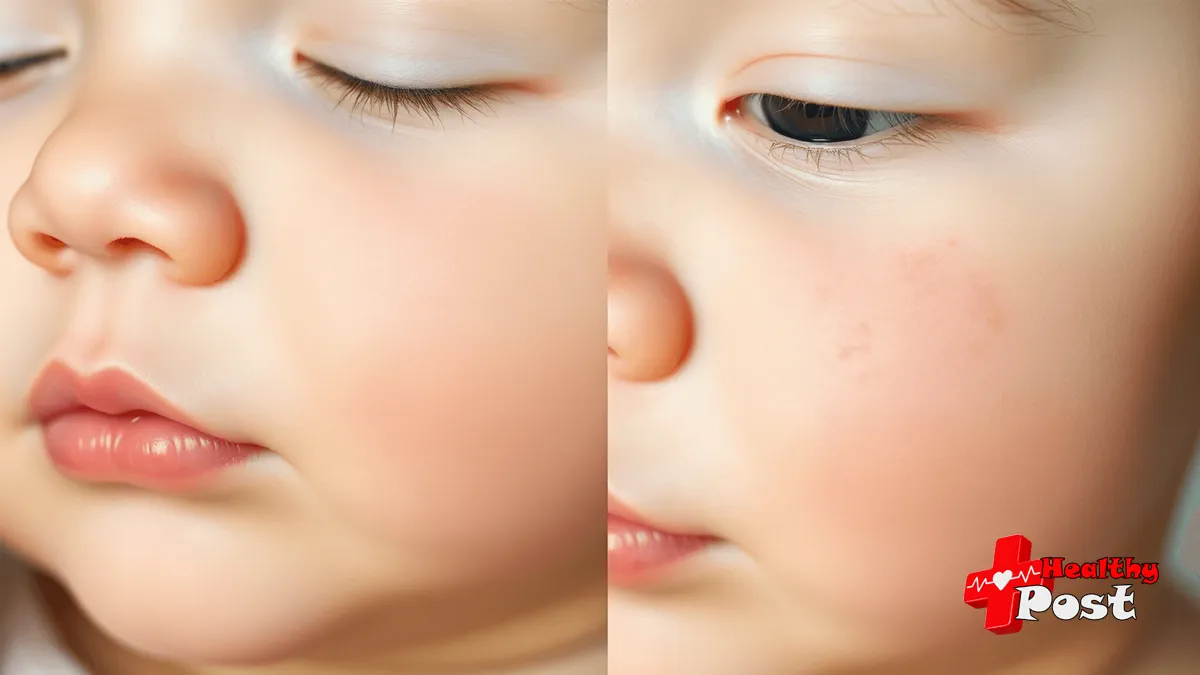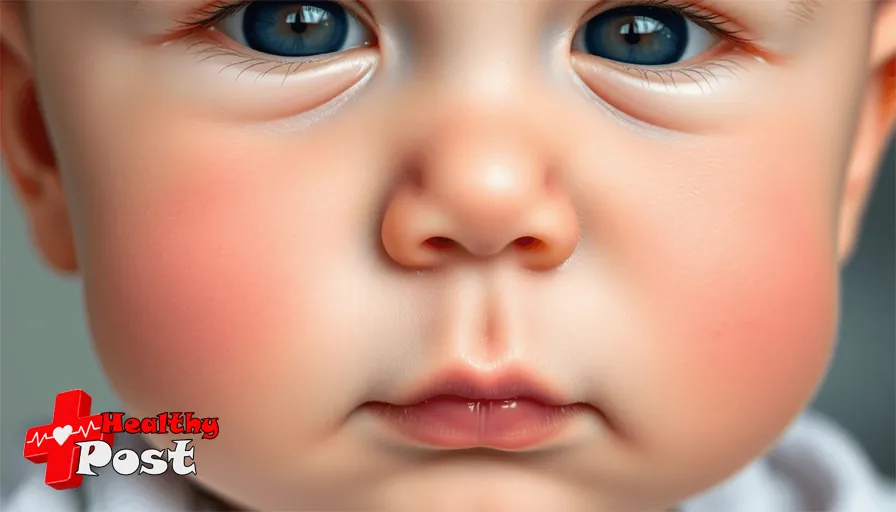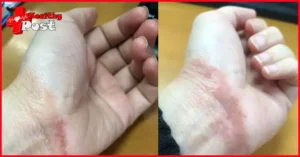
Baby Acne vs Eczema: 10 Critical Differences Every New Parent Should Not Ignore
As a new parent, discovering red spots or patches on your baby’s delicate skin can trigger immediate concern. Two common skin conditions often cause confusion among parents: baby acne and eczema. While these conditions might appear similar at first glance, they require different approaches to care and management.
Your baby’s skin health plays a crucial role in their comfort and well-being. Understanding the distinct characteristics of baby acne and eczema empowers you to:
- Make informed decisions about skincare routines
- Identify when medical attention is needed
- Choose appropriate products for your baby’s specific condition
- Provide effective relief and comfort for your little one
Many parents find themselves asking: “Is this normal baby acne, or could it be eczema?” This uncertainty can lead to unnecessary worry and potentially inappropriate treatment choices. The good news? Learning to spot the differences between these conditions isn’t as complicated as it might seem.
This guide walks you through 10 critical differences between baby acne and eczema, equipping you with the knowledge to identify, understand, and manage these common skin conditions. Whether you’re dealing with small red bumps on your newborn’s face or dry, itchy patches on your infant’s skin, you’ll find clear, practical information to help you make the best decisions for your baby’s skin health.
Understanding Baby Acne
Baby acne, medically known as neonatal acne, affects approximately 20% of newborns during their first weeks of life. This common skin condition presents distinctive characteristics that set it apart from other infant skin issues.
Physical Appearance
- Small red or white bumps (papules and pustules)
- Clustered pimple-like spots
- Mild inflammation around affected areas
- Smooth skin between breakouts
- No scaling or flaking
Common Locations
- Cheeks
- Forehead
- Chin
- Neck
- Upper chest
- Back (less common)
The typical onset of baby acne occurs between 2-6 weeks after birth, though some babies might show signs at birth. The condition peaks around 6-8 weeks of age.
Hormonal Connection
Your baby’s acne develops due to the lingering effects of maternal hormones passed through the placenta during pregnancy. These hormones stimulate the baby’s oil glands (sebaceous glands), leading to:
- Increased oil production
- Clogged pores
- Formation of small pimples
- Temporary skin inflammation
The hormonal influence explains why baby acne often appears during the first few weeks – as maternal hormones remain active in the baby’s system. Male infants might experience more severe cases due to their sensitivity to these hormones.
Natural Progression
Baby acne typically follows a predictable pattern:
- Initial outbreak: 2-6 weeks after birth
- Peak inflammation: 6-8 weeks
- Gradual clearing: 3-4 months
- Complete resolution: Usually by 6 months
The condition rarely causes discomfort to your baby and doesn’t leave permanent marks or scarring when left untreated. Unlike other skin conditions, baby acne doesn’t cause itching or irritation, allowing your baby to remain comfortable throughout the healing process.
Managing Baby Acne: Skincare Tips for New Parents
Baby acne requires minimal intervention, yet proper skincare practices can help manage the condition effectively. Here’s a comprehensive guide to caring for your baby’s acne-prone skin:
Essential Daily Care Practices
- Clean your baby’s face with lukewarm water twice daily
- Pat the skin dry gently – avoid rubbing or scrubbing
- Keep the affected areas dry, especially after feeding or drooling
- Use soft, clean washcloths or cotton balls for cleaning
Products and Practices to Avoid
- Harsh soaps or cleansers
- Adult acne treatments
- Oily lotions or creams
- Scrubbing or picking at the bumps
- Over-washing the affected areas
Recommended Products
- Mild, fragrance-free baby soap
- Hypoallergenic cleansers specifically designed for babies
- Non-comedogenic moisturizers (if needed)
Natural Remedies
- Breast milk application can help soothe irritated skin
- Coconut oil (organic, virgin) can provide gentle moisturization
- White vinegar diluted with water can help balance skin pH
Additional Care Tips
- Change pillowcases and bedding regularly
- Keep your baby’s face clean after feeding
- Dress your baby in loose-fitting, breathable clothing
- Avoid using fabric softeners on items that touch your baby’s face
When to Seek Medical Advice
- Acne appears severe or widespread
- Pimples become inflamed or infected
- Skin shows signs of pain or discomfort
- Condition persists beyond 6 months of age
- Baby develops a fever or other concerning symptoms
Remember that baby acne is temporary and typically resolves without medical intervention. These skincare practices can help manage the condition while protecting your baby’s delicate skin.
Understanding Baby Eczema (Atopic Dermatitis)
Baby eczema, medically known as atopic dermatitis, presents unique challenges for parents dealing with their infant’s sensitive skin. This chronic inflammatory condition creates distinctive patterns and symptoms that set it apart from other skin issues.
Key Symptoms of Baby Eczema:
- Dry, red patches with rough texture
- Scaly or flaky skin areas
- Intense itching that can disrupt sleep
- Possible oozing or crusting in severe cases
- Swollen, warm-to-touch skin during flare-ups
The genetic component of eczema plays a significant role in its development. Research shows that children with parents who have atopic conditions (eczema, asthma, or allergies) face a higher risk of developing eczema themselves. This genetic predisposition affects the skin’s barrier function, making it more susceptible to environmental triggers.
Common Triggers That Spark Flare-ups:
Environmental Factors
- Dry weather conditions
- Hot temperatures causing sweating
- Cold weather exposure
- Dust mites and pet dander
Contact Irritants
- Harsh soaps and detergents
- Synthetic fabric materials
- Wool or rough textiles
- Fragranced products
Dietary Elements
- Certain foods (eggs, dairy, nuts)
- Food additives
- Some natural ingredients
The manifestation of eczema varies among babies. Some experience mild symptoms with occasional flare-ups, while others face persistent, severe cases requiring medical intervention. The condition typically appears first on the cheeks and scalp in younger infants, later potentially spreading to other body areas like elbows and knees as the baby grows.
Understanding your baby’s specific triggers helps create an effective management strategy. Keeping a detailed log of flare-ups and potential triggers enables you to identify patterns and adjust your baby’s environment and care routine accordingly.

Effective Management Strategies for Baby Eczema
Managing your baby’s eczema requires a consistent, multi-faceted approach to soothe symptoms and prevent flare-ups. Here’s a comprehensive guide to help you create an effective management plan:
Daily Moisturizing Routine
- Apply moisturizer within 3 minutes after bathing
- Use thick, fragrance-free creams or ointments
- Reapply moisturizer 2-3 times daily, especially on affected areas
- Look for products containing ceramides or colloidal oatmeal
Bathing Best Practices
- Keep baths short (5-10 minutes)
- Use lukewarm water
- Add colloidal oatmeal to bath water for extra soothing
- Pat skin dry gently – avoid rubbing
Medical Treatments
- Topical corticosteroids for inflammation control
- Prescription antihistamines for itch relief
- Calcineurin inhibitors for sensitive areas
- Wet wrap therapy for severe flares
Trigger Management
- Track potential triggers in a diary
- Remove tags from clothing
- Choose 100% cotton fabrics
- Keep nails trimmed to minimize scratch damage
- Maintain optimal room temperature (68-72°F)
- Use a humidifier in dry conditions
Clothing and Laundry Tips
- Wash new clothes before first wear
- Use fragrance-free, hypoallergenic detergents
- Double rinse laundry to remove residue
- Avoid fabric softeners and dryer sheets
Temperature Control
- Dress your baby in breathable layers
- Remove layers promptly when warm
- Use lightweight blankets for sleep
- Keep the nursery cool and well-ventilated
Remember to document your baby’s responses to different management strategies. This information helps healthcare providers adjust treatment plans for optimal results. Regular check-ups with your pediatrician ensure your management approach remains effective as your baby grows.
Key Differences Between Baby Acne and Eczema That Every New Parent Should Know
Distinguishing between baby acne and eczema requires attention to four critical characteristics. Here’s what you need to look for:
1. Appearance
- Baby Acne: Small red or white pimples with a distinct bump-like texture
- Eczema: Dry, red patches with rough, scaly, or flaky skin that can appear swollen
- The texture difference is noticeable – acne creates raised bumps while eczema forms flat or slightly raised patches
2. Itching
- Baby Acne: Non-itchy condition that doesn’t cause discomfort
- Eczema: Intensely itchy, causing visible distress in babies
- Your baby’s behavior can be a telling sign – scratching or rubbing indicates eczema rather than acne
3. Onset Age
- Baby Acne:Appears within 2-6 weeks after birth
- Often present at birth or develops shortly after
- Eczema:Typically develops between 3-6 months of age
- Rare in newborns under 2 months
4. Location
- Baby Acne:Primarily affects the face
- Concentrated on cheeks, nose, and forehead
- Can spread to neck and upper chest
- Eczema:Age-dependent location patterns
- Younger infants: cheeks and scalp
- Older babies: elbows, knees, and skin folds
- Can appear anywhere on the body
These distinctive features create unique patterns that help identify each condition. Baby acne presents as clustered bumps in specific areas, while eczema shows up as patches that can spread across different body parts.
The absence of itching in baby acne contrasts sharply with the persistent discomfort of eczema. Watch your baby’s behavior – frequent scratching or irritability during skin flare-ups could suggest eczema.
For more detailed insights into understanding these conditions better, including potential allergies related to them, refer to this comprehensive article which provides valuable information on the subject.
Additional Factors to Consider When Distinguishing Between Baby Acne and Eczema
Understanding the underlying causes, duration patterns, and treatment approaches helps create a clear distinction between baby acne and eczema. Let’s explore these critical factors:
Root Causes
- Baby Acne: Triggered by maternal hormones passing through the placenta, oil gland stimulation leads to breakouts, and is not related to allergies or environmental factors.
- Eczema: Genetic predisposition plays a significant role, with environmental triggers activating flare-ups, food allergies worsening symptoms, and compromised skin barrier function.
Duration & Resolution Patterns
- Baby Acne: A self-resolving condition that typically clears within 3-4 months, leaves no lasting marks or scarring, and rarely requires medical intervention.
- Eczema: A chronic condition requiring ongoing management that can persist through childhood, with periodic flare-ups that may improve with age but need consistent care.
Treatment Approaches
- Baby Acne Management: Gentle cleansing with warm water, patting dry without rubbing, avoiding oils or lotions, no need for specific medications, and regular monitoring without intervention.
- Eczema Care Protocol: Daily moisturizing routine, prescribed topical steroids for flare-ups, specific bathing techniques, trigger identification and avoidance, regular dermatologist check-ups, and antihistamines for severe itching.
Response to Treatment
- Baby Acne: Minimal intervention needed as excessive treatment may worsen the condition while the natural healing process works best.
- Eczema: Proper treatment protocol response requires consistent management with treatment effectiveness varying by individual and potential adjustments based on triggers.
These distinct characteristics in causes, duration, and treatment approaches provide clear markers for differentiation between baby acne and eczema. Parents can use these insights to better understand their baby’s skin condition and implement appropriate care strategies.
Preventative Care for Healthy Infant Skin: A Guide for New Parents
Creating a protective skincare routine for your baby helps prevent both baby acne and eczema flare-ups. Here’s your essential guide to maintaining healthy infant skin:
Daily Skincare Essentials
- Use lukewarm water for bathing – hot water can strip natural oils
- Limit bath time to 5-10 minutes to prevent skin dryness
- Pat skin dry gently – avoid rubbing with towels
- Apply fragrance-free moisturizer while skin is slightly damp
- Choose gentle, pH-balanced cleansers designed for babies
Environmental Controls
- Maintain room temperature between 68-72°F
- Use a humidifier to prevent dry air
- Dress your baby in loose-fitting, breathable cotton clothes
- Change wet or soiled diapers promptly
- Keep baby’s nails trimmed to prevent scratching
Trigger Management
- Wash new clothes before first use
- Use fragrance-free laundry detergent
- Avoid fabric softeners and dryer sheets
- Remove tags from clothing
- Keep pets away from baby’s sleeping area
- Clean toys and surfaces regularly to reduce dust
Natural Protection Methods
- Apply breast milk topically – it contains natural antibodies
- Use coconut oil as a natural moisturizer
- Consider silk or bamboo bedding materials
- Keep a skin diary to track potential triggers
- Monitor room humidity levels
Signs to Watch For
- Increased redness or irritation
- New patches of dry skin
- Changes in existing skin conditions
- Unusual skin temperature
- Development of new spots or rashes
Remember to introduce new products one at a time and wait several days before adding another. This approach helps identify potential irritants quickly and maintains your baby’s skin barrier function.
Conclusion
Knowing the differences between baby acne and eczema helps you make better choices about your baby’s skin health. Even though these conditions may look alike, their causes, treatments, and management methods are quite different.
Key takeaways for effective skin health management:
- Baby acne appears as small red or white pimples and usually goes away on its own without any treatment
- Eczema shows up as dry, itchy patches that need regular care and sometimes medical treatment
- A gentle skincare routine is important for managing both conditions
- Identifying the problem early leads to better treatment plans
When you can tell these conditions apart, you can:
- React correctly to changes in your baby’s skin
- Use the right treatment method
- Know when to get medical help
- Avoid unnecessary treatments
Remember: every baby’s skin health journey is different. What works for one baby might not work for another. Trust your instincts, keep talking to your healthcare provider, and change your approach if needed. With this knowledge, you’ll be better able to take care of your baby’s skin needs and give them the best care possible.
[Need professional guidance? Always consult your pediatrician when uncertain about your baby’s skin condition.]
FAQs (Frequently Asked Questions)
What are the main differences between Baby Acne and Eczema in infants?
Baby Acne, also known as Neonatal Acne, typically appears as small red or white bumps on a baby’s face due to maternal hormones and usually resolves without treatment. In contrast, Baby Eczema (Atopic Dermatitis) presents as itchy, inflamed, and sometimes oozing patches that can appear on various body parts and is often linked to genetic predisposition and environmental triggers.
At what age does Baby Acne usually appear compared to Baby Eczema?
Baby Acne commonly appears within the first few weeks after birth and tends to resolve on its own within a few months. Baby Eczema can develop at any time during infancy but often emerges after the first few months and may persist longer without proper management.
How can new parents effectively manage Baby Acne without medical treatment?
Managing Baby Acne involves gentle skincare practices such as cleansing the baby’s face with mild water and avoiding harsh soaps or products. It is important not to use acne medications unless advised by a pediatrician, as Baby Acne typically clears up naturally.
What are the recommended strategies for managing Baby Eczema in infants?
Effective management of Baby Eczema includes regular application of moisturizing creams to maintain skin hydration, using prescribed topical steroids when necessary, identifying and avoiding known allergens or irritants that trigger flare-ups, and establishing a gentle skincare routine tailored for sensitive infant skin.
Why is it important for new parents to distinguish between Baby Acne and Eczema?
Understanding the critical differences between Baby Acne and Eczema helps new parents provide appropriate care and treatment. While Baby Acne usually requires minimal intervention, Eczema may need ongoing management to prevent discomfort, itching, infection, and potential long-term skin issues.
How can new parents prevent flare-ups of both Baby Acne and Eczema?
Preventative care includes establishing a gentle skincare routine using mild cleansers and moisturizers suitable for sensitive infant skin, avoiding known irritants or allergens such as certain fabrics or detergents, maintaining a comfortable environment with appropriate humidity levels, and monitoring the baby’s skin regularly to catch early signs of irritation.


One thought on “Baby Acne vs Eczema: 10 Critical Differences Every New Parent Should Not Ignore”